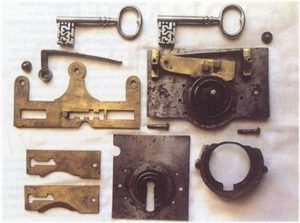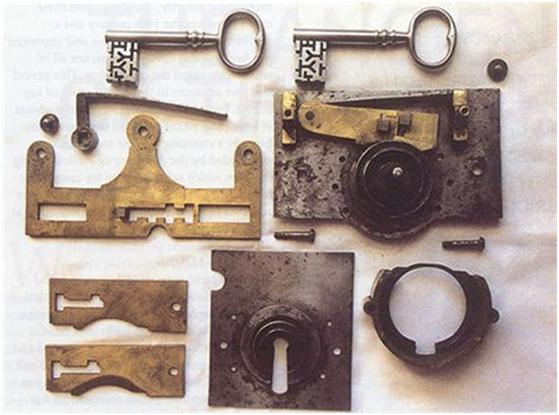Being disorganized causes you to lose time. With the OrbitKey 2.0 leather keychain, you can take the first steps to have a stress-free day. The keychain has a leather case that matches your personality.
It is exciting when there is a new addition to the family. All of a sudden, you are responsible for this little human being. The moment he/she cries everyone flocks to the baby coat, wondering what could be wrong this time. Then time flies,and soon they want to leave the nest. When my first-born child turned 24, I was filled with apprehension that he was moving out. He got a job as a security analyst in an investment firm. It was time to let go,but I was not willing to. Eventually, after much convincing from my husband,I had to let go. I got him an OrbitKey 2.0 Leather Keychain as a good-bye gift. With the keychain, he could start his first lessons in getting organized and eventually start a family.
Many people ask, what how did locks come about?
History of Locks
The earliest evidence of a lock and key device is through the Assyrians at around 600 BC. There is also evidence that the Egyptians also had versions of a pin lock – but made from wood. The system operated similarly to the modern day pin tumbler. When the key was inserted the pins inside the system moved,and this opened the door. Once removed the pins fell into a bolt,and this locked the device.

It was not until 100 AD that the Romans replaced the wooden pin lock with metal parts. The operating system did not change much for the lever tumbler until Robert Barron reinvented it in 1778. However, several ornamental keys were created during this time. In his invention, he uses a set of levers that kept the bolt in place,and this prevented it from moving to lock. He later made improvements to his invention by cutting a slot on the bolt. The tumbler would now need to be aligned properlytomove the bolt. This type of lock is still in existence today.
Things took a change 50 years later during the “Lock challenge” hosted by the British Government. The Government offered a reward of 200 guineas to the person who had the most innovative lock. The challenge was prompted by burglary claims Portsmouth Dockyard. One of the contestants called Chubb developed a lock that with advanced security features that enabled the owner to detect any interference with the lock. He was awarded 100 pounds for his innovation.
Joseph Bramah was the first person to start commercially producing locks for the mass market. In 1818 Jeremiah Chubb added a security feature to his lock that caused the lock to stop working when the wrong key was inserted. One would need a special key to reset the lock. Thiswould later be known as a regulator. In 1865 the key was made shorter when Linus Yale Jr. changed the design of the lock to have the tumbler system inside the lock. The Yale innovation fathered most of the keys we have today.
The modern age has seen the introduction of keyless systems that use biometrics and smart cards. These are more secure but a bit expensive.
Conclusion
Modern-day locks have evolved from wooden locks used in the Assyrian and Egyptian era to smart cards that facilitate keyless entry. Locks still play a vital role in securing personal property. But, burglars are becoming more crafty,and even the most secure premise can stillbe hackedinto. It is vital that you go through the available locks in the market and choose one that fits your budget. The move to keyless locks is on,and many people have started embracing the technology. It is more secure, and you do not need to carry around noisy keys.

